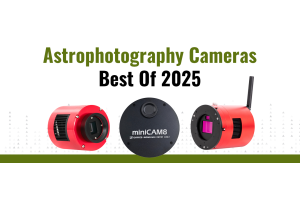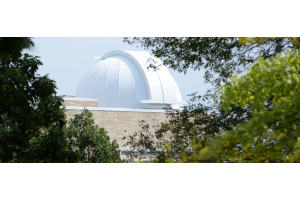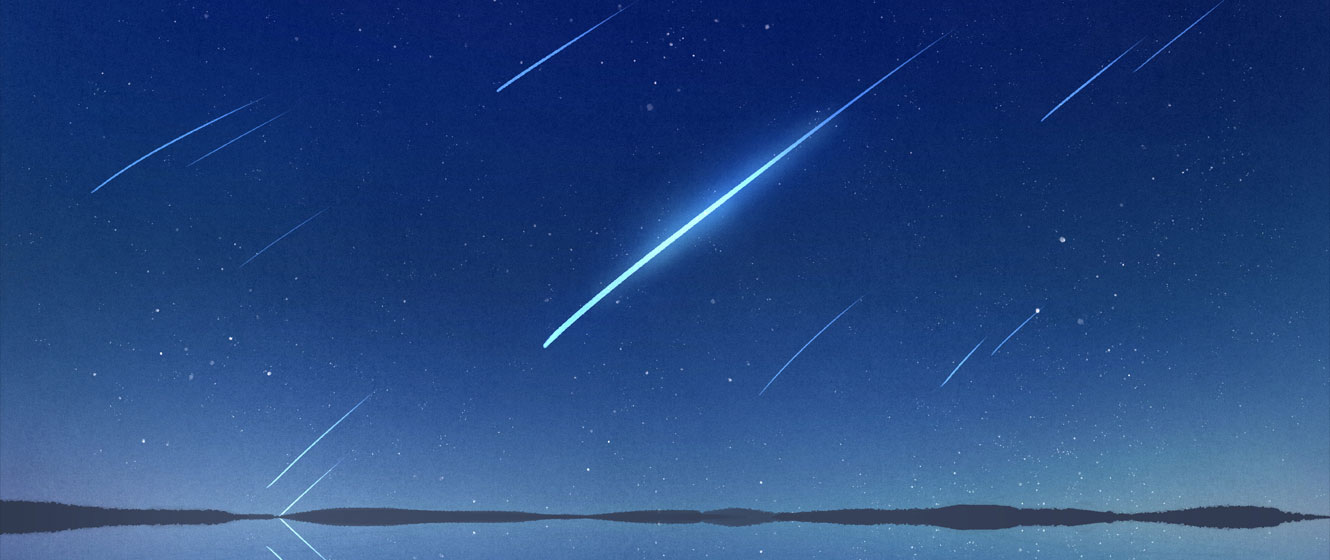
Meteor showers can be a beautiful, celestial spectacle in the night sky. They occur when the Earth passes through the debris, or “trail”, left behind by a comet or asteroid. These small particles, which are often no larger than a grain of sand, then enter the Earth’s atmosphere at very high speeds and create streaks of light in the night sky as they burn up.
Meteor showers can generate a ton of excitement as announcements and predictions generate anticipation. Meteor showers are also culturally significant and are often rooted in myths and traditions. This only enhances their allure, and the accessibility of meteor showers makes them accessible to a broad audience. A prolific meteor shower is often up there with lunar eclipses and planetary conjunctions in terms of hype.
However, this allure often comes with misconceptions and poor expectations that can ruin the experience for a beginner stargazer who is enthusiastic about the event. Let’s address some of these misconceptions and paint a picture of what to really expect during the next meteor shower.
Setting The Stage: Expectations
In movies and television, meteor showers can be depicted as dramatic and even romantic, with a couple under the stars watching the sky erupt in shooting stars. Science fiction films often feature apocalyptic meteor showers, or dramas where characters make a wish under a shooting star. While these portrayals definitely contribute to the popular excitement surrounding meteor showers, they create unrealistic expectations in order to help tell the story.
In the age of social media, meteor showers become instant viral sensations. Platforms like Instagram, Twitter, and TikTok are flooded with captivating images and videos of meteor showers shared by enthusiasts and professionals alike. The immediacy and shareability of these platforms allow for the rapid dissemination of information about upcoming meteor showers, creating a sense of communal anticipation. Stunning time-lapse videos and photographs of meteor showers, created by very talented amateur astrophotographers, entice more people to venture outside to witness the celestial display. However, the curated nature of social media content can sometimes create unrealistic expectations, as only the most visually striking moments are often highlighted.
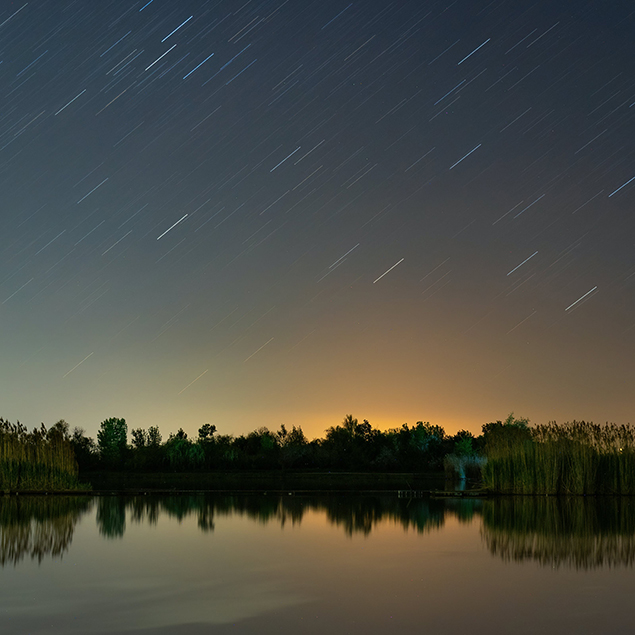
The Reality Check
While you may go outside expecting to see a prolific meteor shower, you may be disappointed to not see a single shooting star during a big event if you live in a city. One of the key factors that influence the visibility of meteor showers is light pollution. Urban areas often have high levels of light pollution that can significantly diminish the clarity of the night sky, casting a sickly orange-brown glow on the sky. The issue underscores the importance of choosing dark sky locations for optimal meteor shower viewing.
Additionally, weather conditions will also impact the visibility of meteor showers. Cloud cover, humidity, and atmospheric clarity can all play a big role in determining whether one can see a meteor shower. Light pollution, combined with less-than-ideal weather conditions, can completely ruin your view.
But let’s talk about what you’ll really see if you get away from the city and it’s a clear night. You may anticipate a constant stream of meteors during a meteor shower, as portrayed in the media. However, the actual frequency varies. Astronomers refer to the intensity of a meteor shower by the zenithal hourly rate (ZHR). This refers to the number of meteors a single observer is likely to see at the peak of a meteor shower looking straight up at zenith. It’s important to note that most meteor showers do not originate from zenith, which reduces their visibility, but this still provides a relevant metric to help us understand what to expect.
Let’s look at the Geminids for example. The Geminids have a ZHR of 120-160 meteors per hour under the best conditions. That’s roughly two shooting stars per minute. Far from the “shower” of shooting stars one may expect to see. Additionally, meteor showers are inherently unpredictable, and their intensity can vary from year to year. Factors such as the debris density in the comet’s trail and the Earth’s position in its orbit contribute to this unpredictability. Furthermore, all of the above could align, but if the Moon is out many of the brightest shooting stars can be obscured by the light of the Moon.
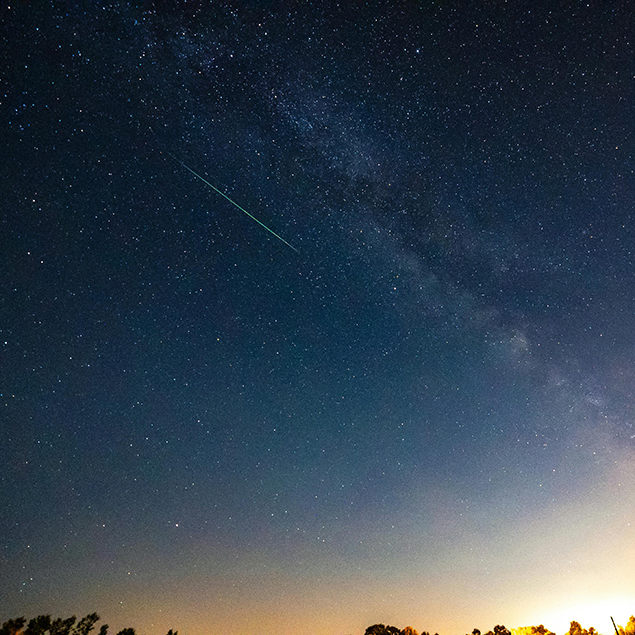
The Best Meteor Showers of the Year
Okay, so you now understand only to expect, at best, a few shooting stars per minute during the best meteor showers of the year. But what are the best events of the year? We talked about the Geminids, but another prolific meteor shower is the Perseids. The Perseids take place every August and can offer some of the best meteor showers. These meteors come from the constellation of Perseus, thus the name the “Perseids”, and have a ZHR of around 60-100 meteors per hour. The Perseids are known for their fast and bright streaks.
Another meteor shower to look out for is the Quadrantids, which occur in early January. These come from the constellation of Bootes and can be spotted early in the morning before sunrise. The Quadrantids have a ZHR that can exceed 100 meters per hour on the best of nights. The Orionids, coming from Halley’s Comet, peak in late October. Radiating from the constellation of Orion, this meteor shower can best be seen in the early morning hours before sunrise. However, the Geminids, as discussed earlier, are often the best show, as they consistently feature a ZHR of around 110-125 meteors per hour.
Other, lesser meteor showers include the Lyrids in late April coming from the constellation of Lyra; the Southern and Northern Tauruids coming from the constellation of Taurus in November; and the Andromedids coming from the constellation of Andromeda also in November. All of these meteor showers offer a chance to see one or two shooting stars in an hour under ideal conditions.
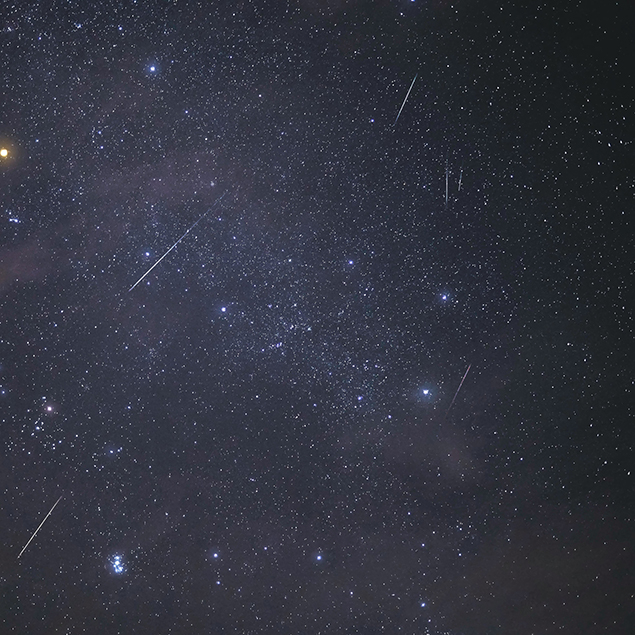
The Importance of location and viewing
As mentioned previously, urban skies can absolutely kill your view of a meteor shower. The best way to view meteor showers is to get to a nice, dark sky that’s relatively free of obstructions. Ideally, you want to be under a Bortle 5 sky or lower to get a decent view of the meteor shower. The Bortle Scale is a numerical scale used to assess the darkness of a night sky at a specific. This ranges from Class 1 (darkest skies) to Class 9 (middle-of-city bright), the Bortle Scale takes into account factors such as skyglow, artificial light, and visibility of celestial objects. The best way to find the nearest park or open field with dark skies is to use a tool like lightpollutionmap.info or similar.
If you’re planning to just watch the meteor shower, no other optical equipment is needed beyond just your eyeballs. This is because any optical device will have a constrained field-of-view, limiting the chances you see a fireball in the sky. Leave your binoculars or telescope behind for this celestial spectacle! However, if you’re planning on photographing the meteor shower, your best bet is just to use a widefield lens (14-18mm), a DSLR, or a tripod. Simply set your camera up, point toward the location of the meteor shower’s origin, and take a loop of 30” exposures while you’re out at an ISO of anywhere from 400-1600. You can then stack the images together in a program like Photoshop to show all the meteors you captured!
Meteor showers are a celestial spectacle that continues to captivate and inspire people around the world. While managing expectations and understanding the factors influencing visibility are essential for a more realistic experience, it is crucial to encourage an ongoing interest in these cosmic events. The allure of meteor showers lies not just in the number or intensity of meteors but in the shared experience of looking up at the night sky and marveling at the wonders of the universe. As we navigate the unpredictability of each meteor shower, the importance of embracing the intrinsic beauty of the night sky becomes evident. Whether the sky is ablaze with a meteor storm or adorned with a few faint streaks, the simple act of gazing upward fosters a connection with the cosmos that exceeds expectations and adds to the timeless fascination with the mysteries of the night sky.

Learn More
Interested in learning more about nebulae, galaxies, planets, and more? Not sure where to begin? Check out our Astronomy Hub!







